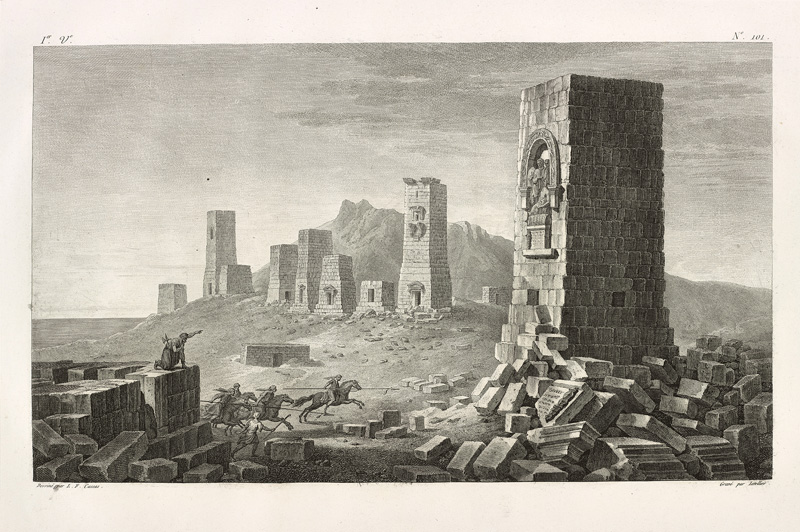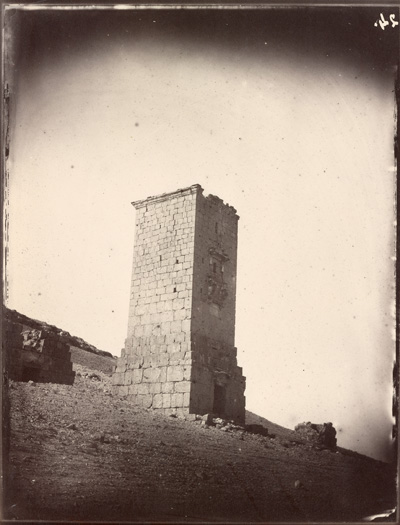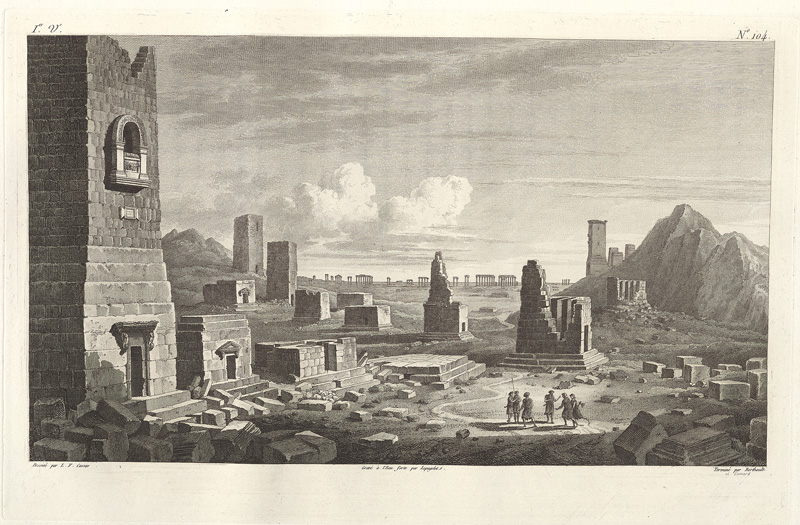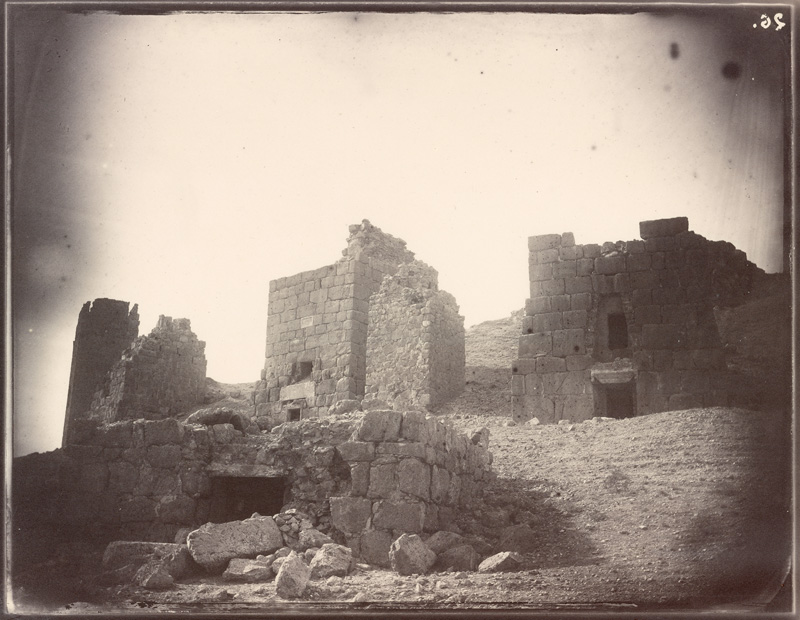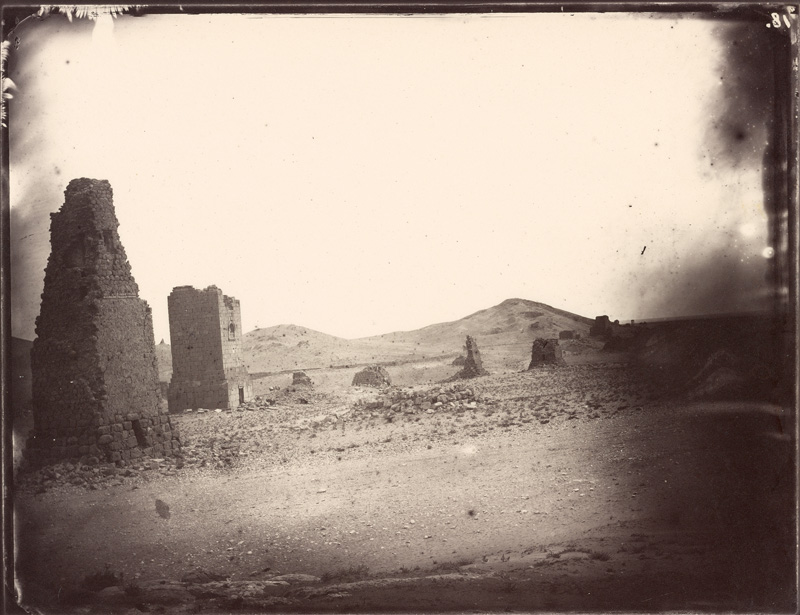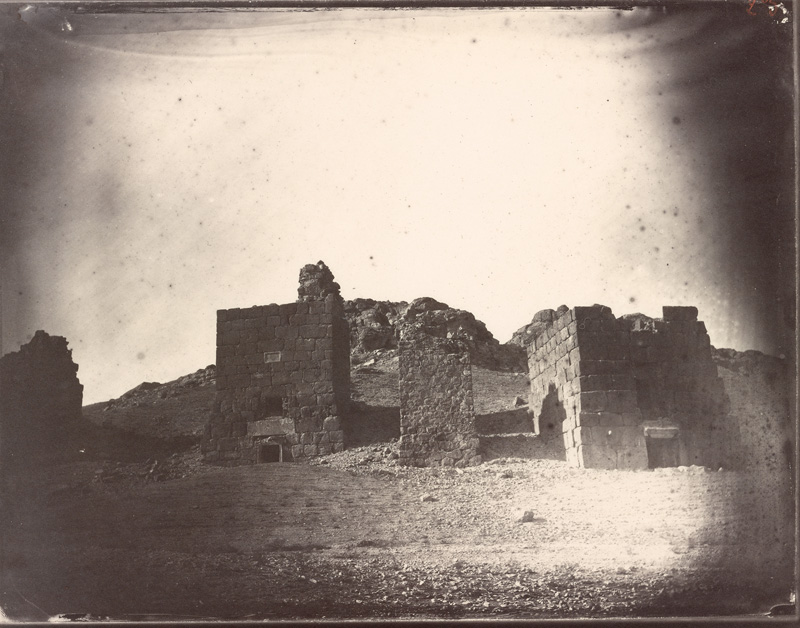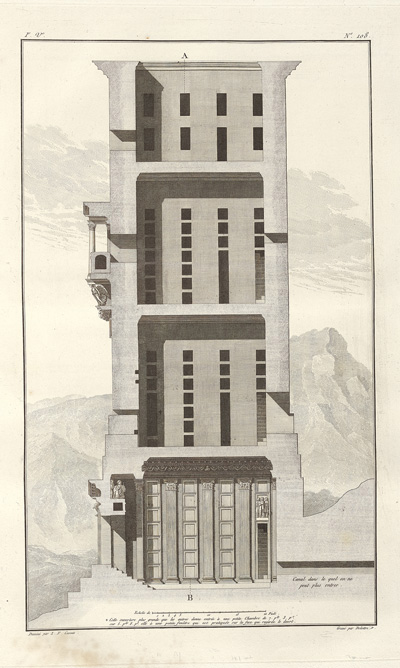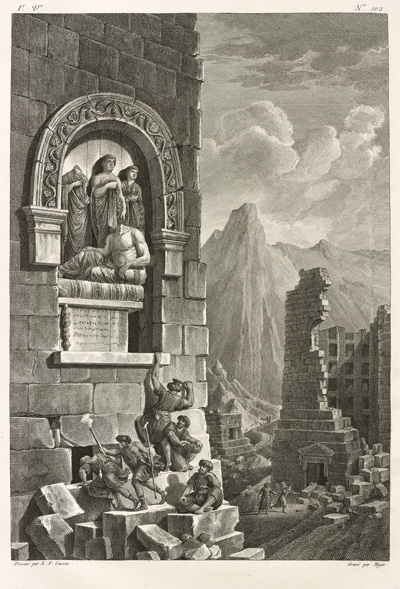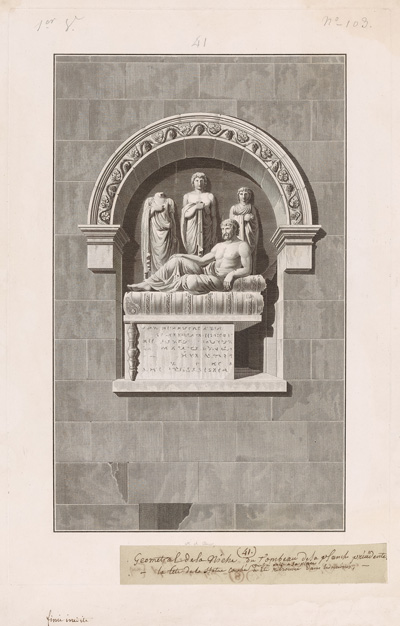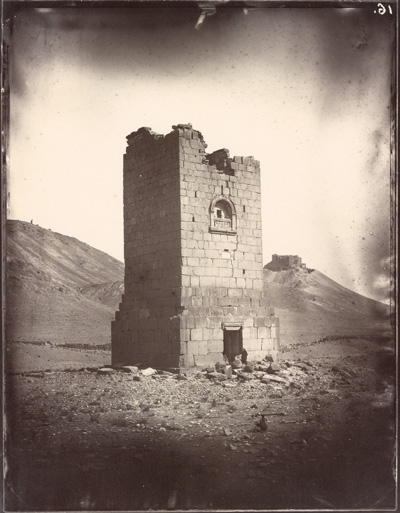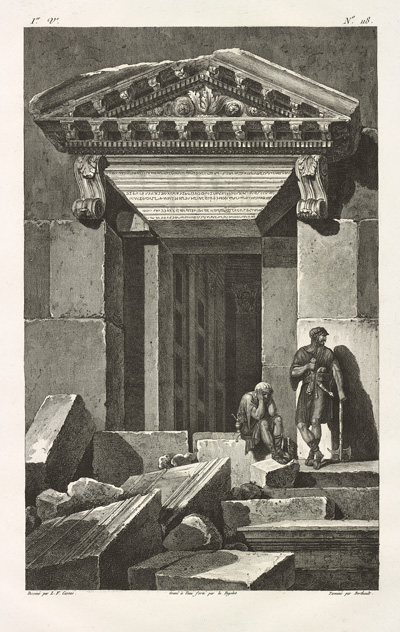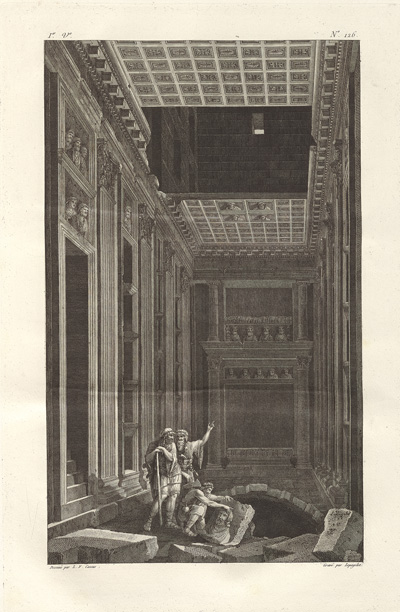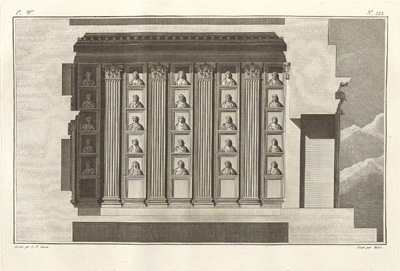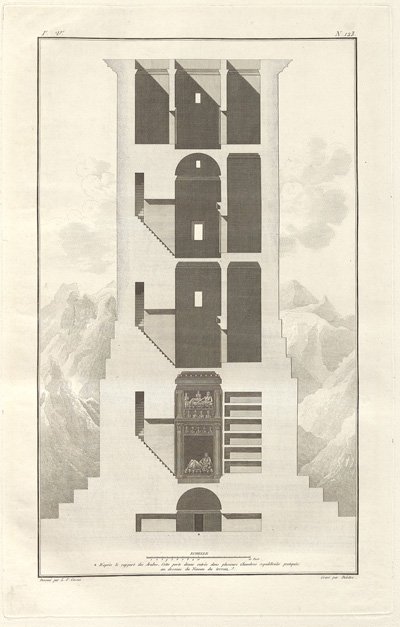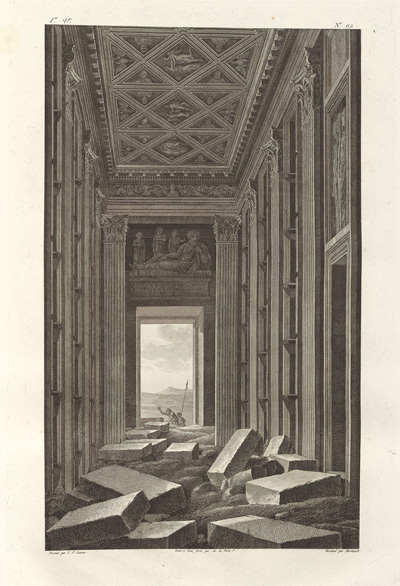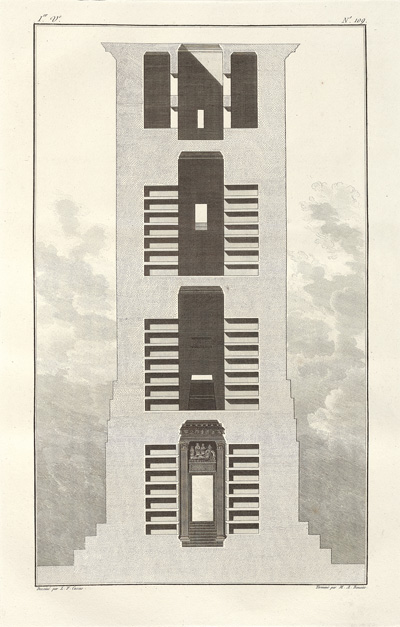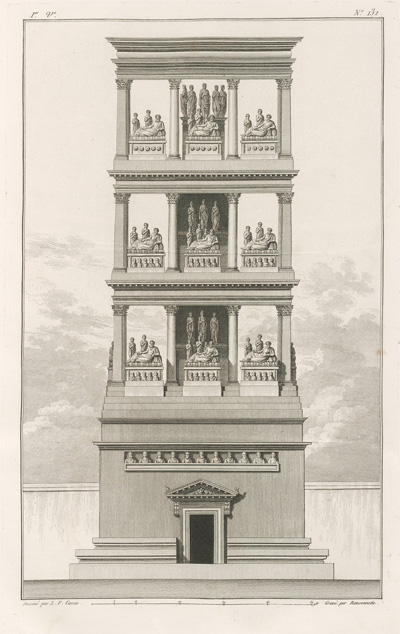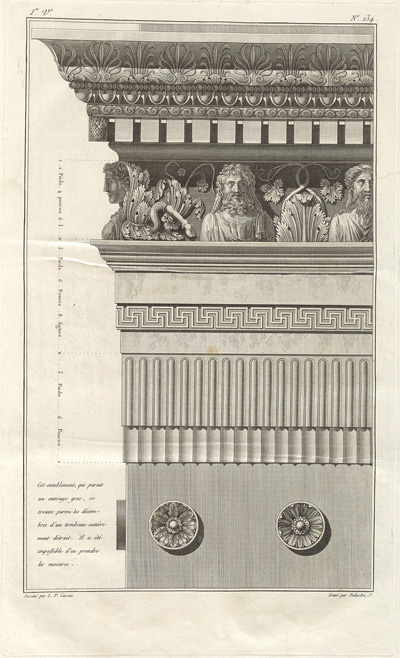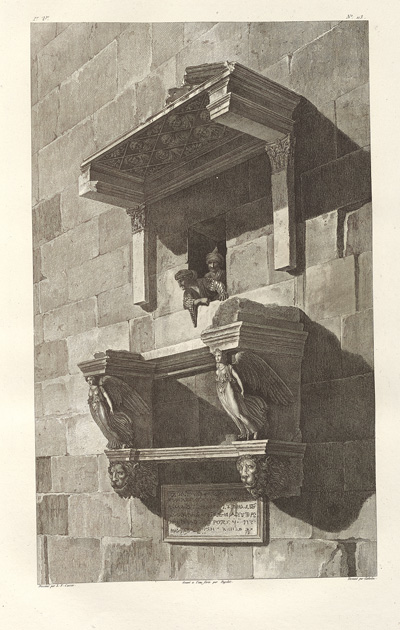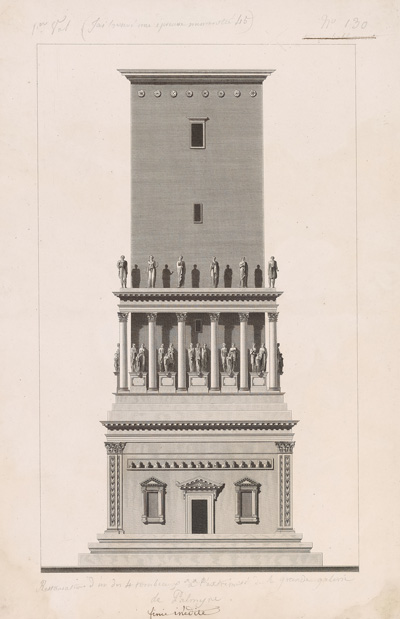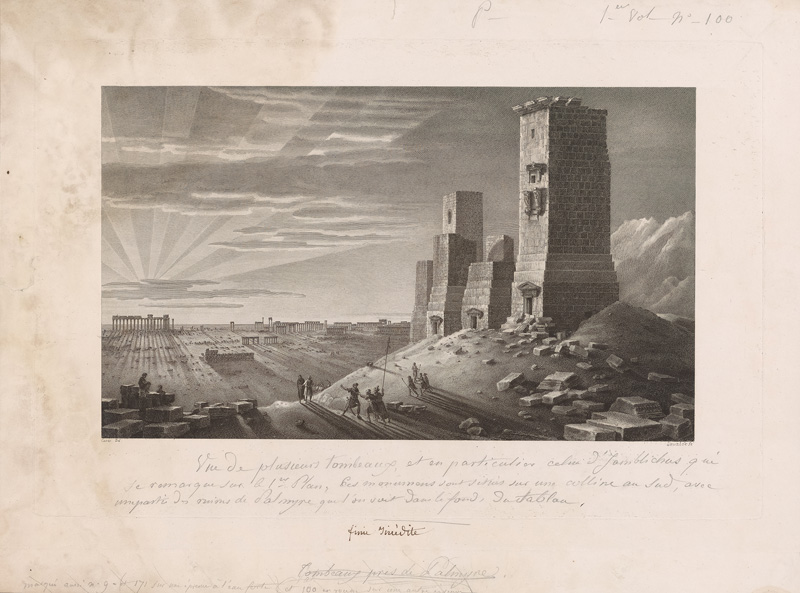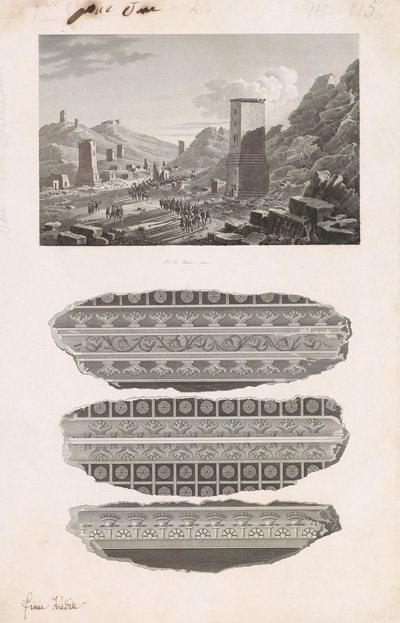Valley of the Tombs
Palmyrene tomb architecture reflects the heterogeneity of this powerful oasis society. Unlike civic buildings and temples, the tomb monuments at Palmyra represent private intentions and reflect varying levels of wealth and class. Tombs contained multiple burials, usually associated with one family or clan. The deceased were placed in loculi (rectangular burial spaces), sealed stone slabs bearing the "portrait" of the deceased. Prior to their 2015 destruction, the significant number of extant dated reliefs among the tombs helped identify and establish a chronology for three major types of tomb structures.
Tower tombs, dating from 9 BCE to 128 CE, are the most distinctive type of burial architecture in Palmyra. In 2015 ISIS destroyed some of the largest and best-preserved tower tombs, notably those of Elahbel, Iamlichus, and Kitot. During the second ISIS occupation, in 2017, more tower tombs were destroyed. Viewing Cassas's etchings, it is possible to imagine how the "Valley of the Tombs" once looked, enlivened with multistoried towers containing sculptural decoration on both the exterior and interior tombs. By the 2nd century, a more elaborate decorative scheme might include coffered ceilings, Corinthian-style pilasters, and small chambers filled with reliefs representing banquets. Such edifices clearly signaled to all the presence of the dead among the living. Though providing fewer details, Vignes's photographs capture the powerful desert light as it struck these great towers dominating the valley, effectively validating Cassas's impressive funerary landscape.
Dated examples of hypogea (underground tombs) range from the 1st to the 3rd century, when they were the most common type of burial. As the name suggests, these tombs were carved out of the rock and usually required stairs or ramps to reach the larger interior spaces, often richly decorated with colorful wall paintings and delicately carved architectural ornaments. From the end of the 2nd century, the tombs housed enormous sarcophagi.
The last major phase of tomb architecture is the temple tombs, which take a form more like a Greco-Roman palace or temple. Dating from 143 to 253 CE, they appear after the visit of the Roman emperor Hadrian to Palmyra in 129 CE. Like all the others, these "houses of eternity" contained rich decoration and the traditional Palmyrene funerary busts seen in the other tomb types.
